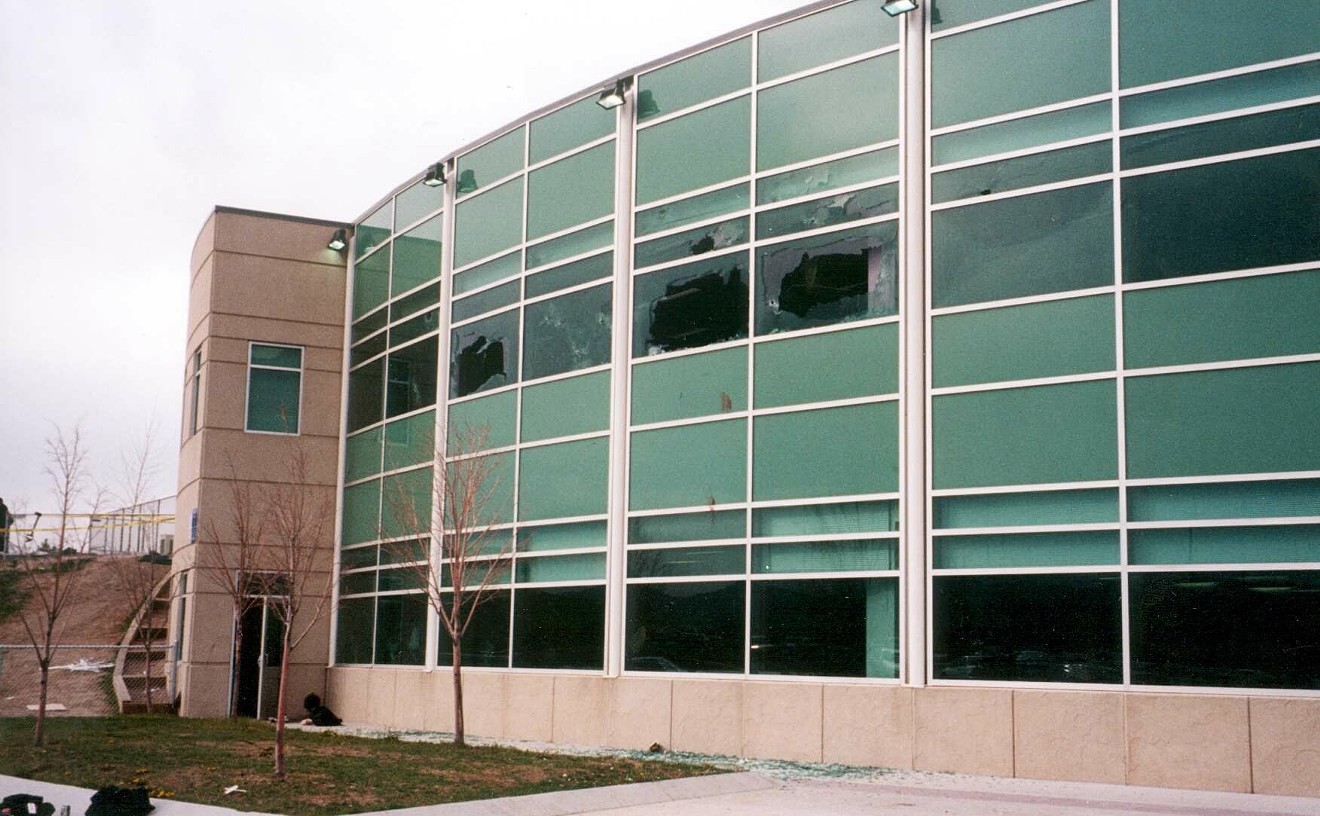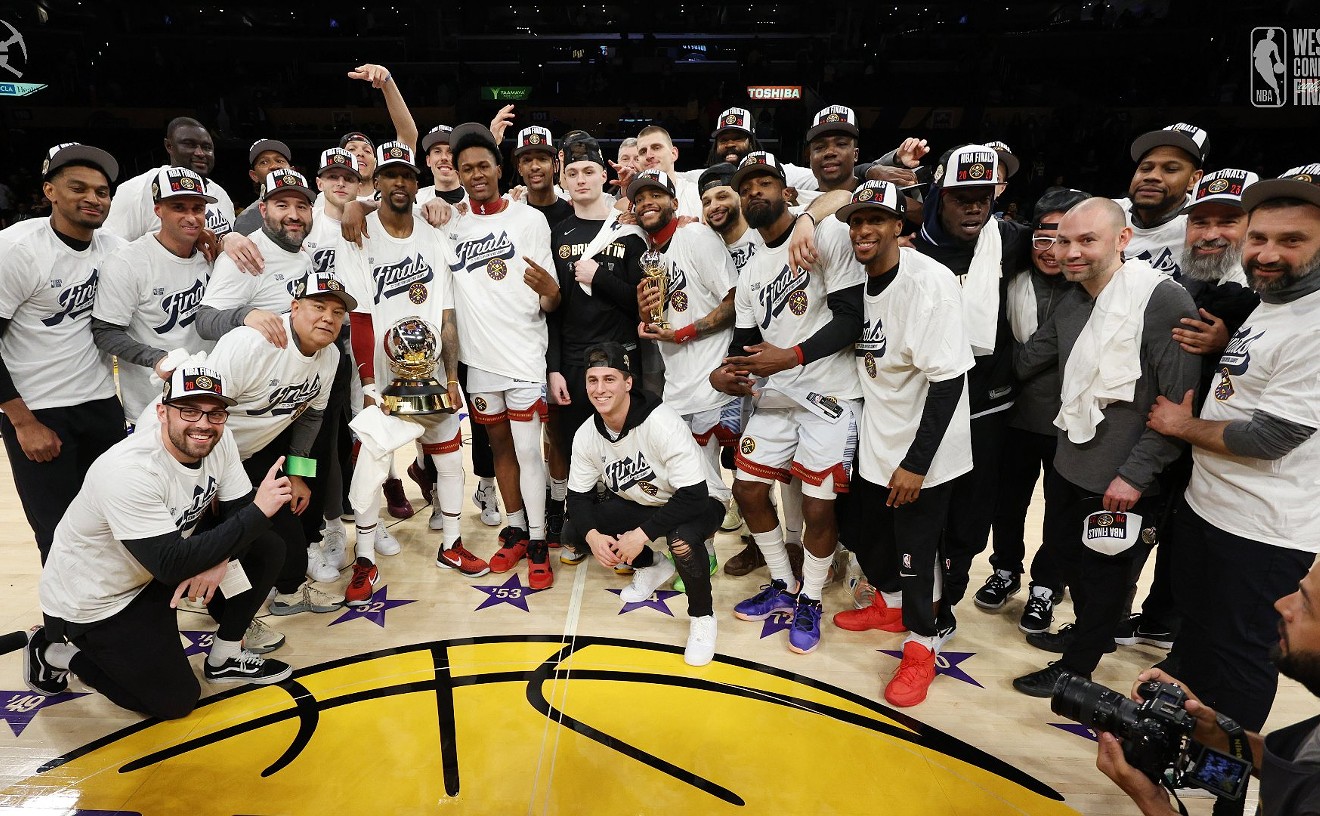"My students were asking me throughout the semester, 'When are you going to talk about the people from here?'" Morales recalls. "I got kind of defensive, saying, 'Show me the book on this.' There was no book."
The questions persisted. His students wanted to learn more about the Chicano movement of the 1960s and early 1970s and local activists of that period -- including Ricardo Falcon, Luis Jr. Martinez and Reyes Martinez, all of whom died violently. They wanted to know about the land-grant struggles in the San Luis Valley and crusaders such as Apolinar Rael. But Morales, a Cold War specialist who was raised in San Antonio, had little information to offer.
"Those were just names to me," he says. "It was clear to me that there were blank spots in the record."
Over the past four years, with Morales serving as academic advisor, a student group at MSCD has begun exploring some of the overlooked aspects of local Chicano history. The group, known as Beyond Chicanismo, has brought in an impressive array of speakers, launched an ongoing oral-history project and produced two books that are now being used as supplemental texts in Department of Chicano Studies classes.
Although the work has been conducted by only a handful of students, it's managed to stir controversy both on and off campus, questioning the conventional wisdom about the Crusade for Justice and the radical student movement in Boulder. "The idea was to fill in the voids, to bring people in and get their version of what actually happened," says senior Daniel Salcido. "It turns out to be more complex than it was presented before. There were a lot of different factions and directions, a lot of questioning of the leadership of these groups."
Originally, the students contemplated calling their project "Beyond the Four Horsemen" because they intended to examine subjects beyond the four traditional icons of Chicano activism: farm-labor leader César Ch´vez, land-rights activist Reyes Tijerina, La Raza Unida founder Jose Angel Gutierrez and Denver's own Corky Gonzales, leader of the Crusade for Justice. But that label was deemed "a little too personal," Morales says, particularly as the group began to look at broader connections between the local Chicano movement and other activist causes.
Morales learned early on that the effort was going to ruffle a few feathers. In 1998 he introduced one of his classes to The Ultimate Betrayal, a less-than-reverent account of the Crusade for Justice written by Juan Haro, a disillusioned former lieutenant. One of Corky Gonzales's nephews was in the class, and Morales soon received complaints from the Gonzales family about the book.
"To me, it was just introducing another perspective, another argument," Morales says. "But to these people, it was all these wounds that had never healed. People started reading into what we did as having some kind of hidden design."
Other long-simmering feuds erupted at public events, when speakers from one faction or another were invited to share their views. On one occasion, Morales had to call the police to remove a disruptive audience member who was trying to videotape the proceedings. Department chairman Luis Torres has been solidly behind the group, but "the support from other faculty was lukewarm when we started," Morales says. "The students got offended at the idea of someone telling them what they could or couldn't study. They aren't here to inherit these ancient hatreds."
In recent years, Beyond Chicanismo has expanded its agenda, bringing in speakers on the New Afrika movement, the Puerto Rican independence movement, and even former Weather Underground activist Bernadine Dorn. Many of the speakers reduced their usual fees or waived them once they learned more about the project. "We're getting a lot of bang for the student-activity buck," Morales says. "What other group on this campus is willing to invest the time and plan and invite someone to speak who is outside their own identity?"
But revisiting the fractured militancy of a generation ago has its drawbacks, too. Some of the bombings that rocked Denver in the heyday of "El Movimiento" remain unsolved, and inviting grizzled ex-revolutionaries to share their stories creates ethical quandaries.
"There was probably a covert side to the Chicano movement," Morales notes. "But how far can we push this without getting subpoenaed by a grand jury? How do you do oral history on this subject in the context of 9/11? My hope is that Beyond Chicanismo can be used to heal these kinds of wounds instead of just open them."
Salcido says the healing can take place in surprising ways. He recalls another student's surprise at coming across a picture of his uncle, who died in a bomb blast decades ago. The subject had been taboo in his family for decades. "He took the picture to his family and got people talking to him about his uncle," Salcido says. "It was important to him to know what happened."
The two student-produced books that have resulted so far, filled with little-known photos, posters and reminiscences, make a compelling case for the academic value of the project. The first, The Symbols of Resistance, focuses on the lives of Falcon, Luis Jr. Martinez, and Los Seis de Boulder, six student activists who died in two bomb explosions in 1974. The second, The Struggle for La Sierra, presents various accounts of the forty-year battle by locals to regain rights of access to the Taylor Ranch in Costilla County.
"I think they've had a positive impact," says attorney Francisco "Kiko" Martinez, whose brother Reyes was one of Los Seis de Boulder. "When you're involved in something, you hold it close and have a different perspective from people looking at it twenty or thirty years later. They're trying to put it all in a larger context."
Maria Valdez, a San Luis historian and longtime activist in the Taylor Ranch litigation, says she was impressed at how hard the students worked. "Compared to the '60s, it's a different crowd," she says. "They couldn't tell the whole story from Denver, but one photographer did come down and got very interested in the story. And they have people mentoring them, and that adds to the whole experience."
Senior Dave Mason says the project has played a vital role in his education. "I was raised with an idealized view of history," he says. "Almost every interview I've been involved in challenges that. You wind up with more questions than you had before -- and that's good. If there's no revisionism, there's no study of history."











